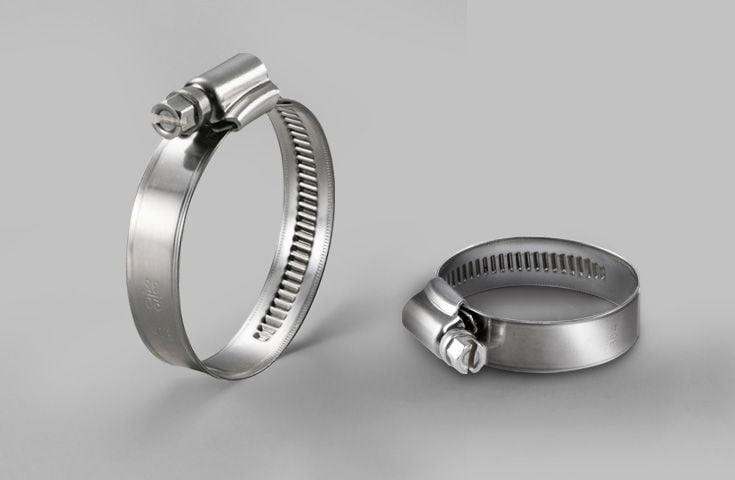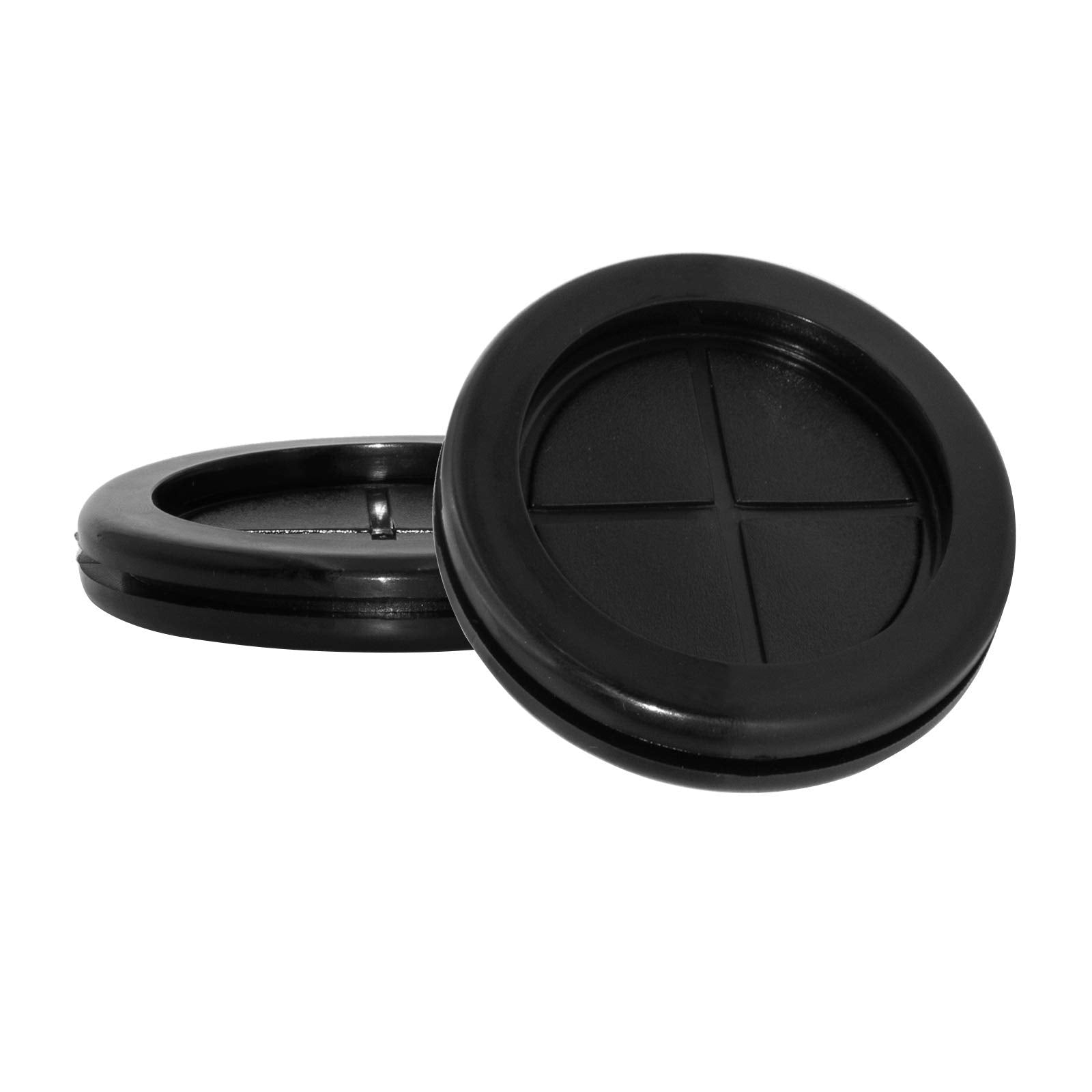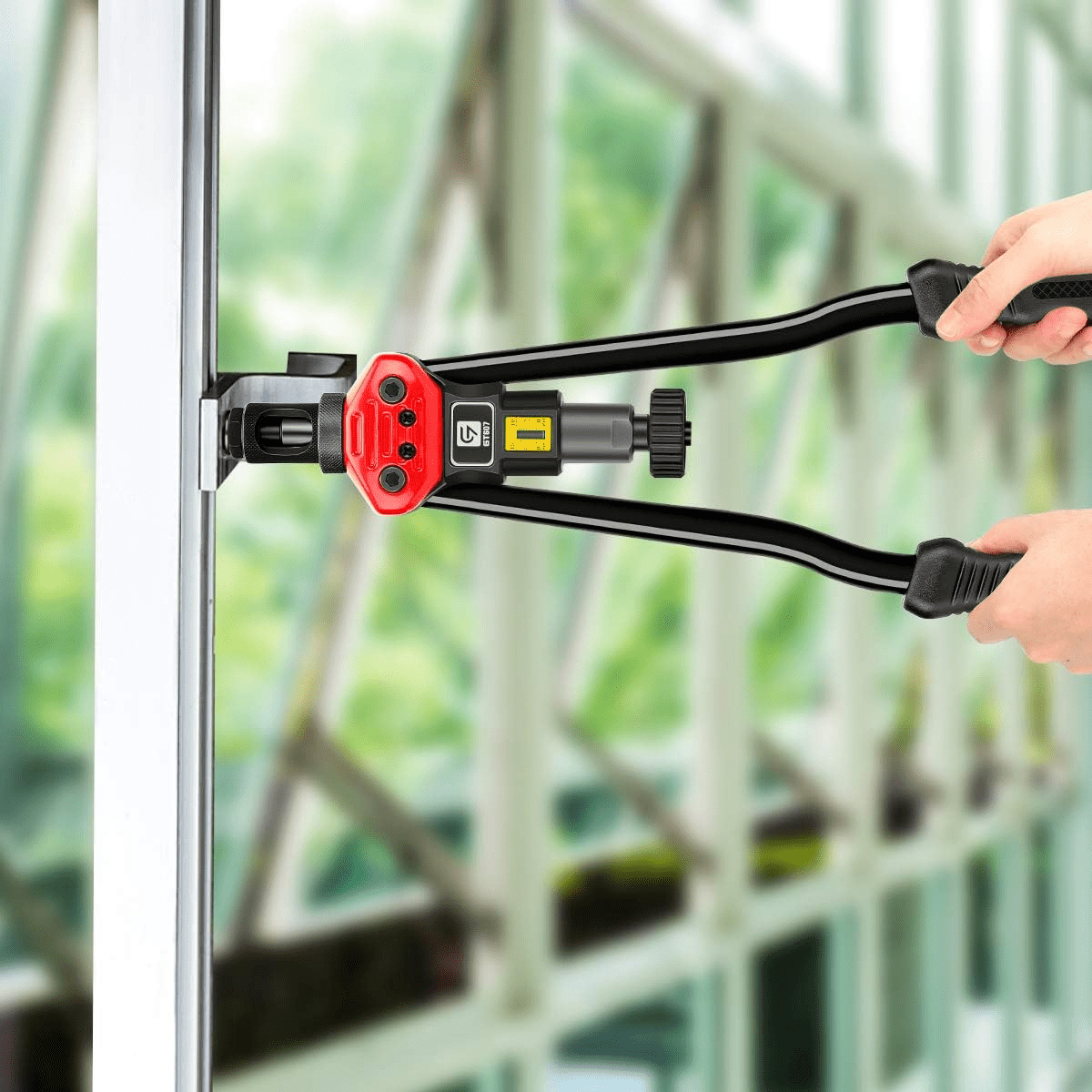Why Clamp Strength Matters for Your Hose Connections
The primary job of any hose clamp is to secure a flexible hose to a barb, nipple, or spigot so that leaks, blow-offs, and contamination are prevented. Strength matters because:
- 💥 Safety: In automotive or industrial systems, a failed clamp under pressure can spray hot fluids or release suspended loads.
- 🛠️ Reliability: Stronger clamps tolerate vibration, thermal cycling, and minor imperfections in hose or barb size.
- 💧 Leak prevention: A uniformly clamped joint keeps seals intact over months and years, saving maintenance time.
We'll explore which clamps are strongest and why — and how "strongest" is contextual: the best clamp for a diesel turbo charge hose differs from the best one for a garden hose or low-pressure vent line.

Common Hose Clamp Types (Quick Overview)
Here are the clamp families you'll encounter most often. Each has pros/cons depending on pressure, hose material, and environment.
1. Worm-drive (screw) clamps
Probably the most familiar — a slotted band with a captive screw that tightens the band. Affordable and versatile, but band profile and screw placement matter for strength.
2. T-bolt clamps
T-bolt clamps deliver consistent, high radial load thanks to a broad band and a bolted closure — preferred for high-pressure or heavy-duty applications (turbo hoses, industrial coolant lines).
3. Ear (Oetiker) clamps
Permanently crimped clamps that offer compact profiles and excellent sealing for flexible or thin-walled hoses. Installation is single-use with crimping pliers.
4. Spring (constant tension) clamps
Made from spring steel, they maintain tension during thermal cycles. Good for low to medium pressure where repeated expansion/contraction happens.
5. Wire clamps & snap rings
Lightweight and used for trim or light vacuum lines — not a top choice where strength is critical.
Which one is strongest on paper? Generally, T-bolt clamps and heavy duty wide-band worm-drive clamps are the champions for load-bearing joints.
Strength Comparison: Practical Data Table
Below is a comparative table that summarizes clamping performance under typical working scenarios. Note: numbers are indicative ranges — actual performance depends on band width, material, and installation.
| Clamp Type | Typical Max Working Pressure (approx.) | Best For | Reusability |
|---|---|---|---|
| T-bolt clamp (wide band) | > 100 psi (can handle much higher in proper assemblies) | Turbo hoses, coolant, heavy diesel lines | High (bolted) |
| Heavy-duty worm-drive (wide band, stainless) | ~60–150 psi | General high-pressure plumbing, fuel lines | High |
| Ear / Oetiker clamp (crimp) | ~40–100 psi (excellent sealing) | Thin-walled hoses, sanitary applications | Low (single-use) |
| Spring (constant tension) | ~20–60 psi (depends on size) | Thermal cycling, radiator hoses | Medium |
| Wire / snap clamps | Low — for vacuum/low pressure | Cable/breathing lines, trim | Medium |
Bottom line: for maximum mechanical strength under pressure choose T-bolt or heavy-duty wide-band worm-drive clamps. For applications where a permanent, low-profile seal is required, Oetiker clamps are excellent.
Material & Corrosion: Which Stainless Grade is Best?
Strength isn’t only band geometry — material matters. Stainless steel dominates clamp construction. Here's how to think about grades:
| Material | Corrosion Resistance | Typical Use |
|---|---|---|
| 304 Stainless | Good (general use) | Automotive, household |
| 316 Stainless | Excellent (marine/salt environments) | Marine, corrosive environments |
| Carbon steel (plated) | Moderate — plating may wear | Low-cost, indoor, dry use |
If your clamps live near salt spray, de-icing salts, or coastal air — opt for 316 stainless. For most garage and household tasks, 304 is sufficient and more cost effective.
When to Use Which Hose Clamp — Practical Application Guide
Automotive (turbo, coolant, fuel)
For critical automotive hoses — turbocharger hoses, intercooler piping, and high-pressure coolant hoses — use T-bolt or wide-band worm-drive clamps. These provide uniform radial pressure and resist blow-off during boost or sudden pressure spikes.
Marine & boating
Corrosive environments demand 316 stainless T-bolt clamps or crimped Oetiker clamps for bilge and raw-water hoses. Avoid plated carbon steel near saltwater.
Plumbing & household
For under-sink or appliance hoses, heavy-duty worm-drive or spring clamps are common. For sanitary or food-contact lines, consider crimped clamps and food-grade materials.
Industrial & hydraulic
Industrial fittings often require custom-engineered clamps or T-bolt assemblies sized for working pressures. Work with specifications and safety factors — and consult material compatibility charts for sealants and fluids.
Installation Best Practices — How to Avoid Clamp Failure
Even the strongest clamp fails if installed poorly. Follow these rules:
- Use the correct diameter: The clamp should sit squarely on the hose with minimal overlap — too big or too small reduces grip.
- Positioning: Place the clamp just behind the barb’s lip — where the hose material is fully supported by the fitting.
- Torque control: Tighten to manufacturer torque specs. Over-tightening cuts into hose material; under-tightening leaks.
- Even pressure: For wide bands (T-bolt), ensure even tightening across the band — don’t let one side carry the load.
- Clean contact surfaces: Remove dirt, corrosion, or paint where the band seats.
- Use protective liners: For soft hoses, consider a protective strip under the band to avoid cutting the hose.
A practical tip: when swapping to a higher-strength clamp, make sure the hose wall and barb are rated for the additional clamp load — otherwise you may locally damage the hose.

Pro Tools & Tips — Tightening, Torquing, and Fastener Kits
Professional results come from the right tools. For example, if you’re doing repeated clamp installs or swapping to crimped clamps, the correct pliers and torque drivers matter. HomeDIYer offers tools that help with repetitive fastener tasks — see the Snap Button / Heavy Duty Fastener Pliers, which are useful for rivets and fastener work in tight spaces.
Recommended workshop kit
- Torque screwdriver or torque wrench with small bits
- Band clamp driver (for worm-drive clamps)
- Crimping pliers (for Oetiker/ear clamps)
- Protective hose liners and soft washers
- Replacement clamps in multiple sizes — avoid reusing a compromised clamp
Using the right combination of clamp type + tool is how pros achieve leak-free longevity.
Frequently Asked Questions (FAQ)
- Q1: Is a T-bolt clamp always stronger than a worm-drive clamp?
- A: Not "always" — but generally yes for radial load and high-pressure hoses. A heavy-duty wide-band worm-drive can approach similar performance if made from thick 304/316 stainless and properly installed.
- Q2: Can I tighten a clamp too much?
- A: Yes. Over-torquing will deform or cut the hose, damage the barb, and create stress points that lead to leaks.
- Q3: What clamp should I use on my turbo intercooler hose?
- A: Use a high-quality T-bolt clamp in 316 stainless ideally; pair it with a silicone coupler designed for boost pressure.
- Q4: Are crimp (Oetiker) clamps permanent?
- A: Generally yes — they are intended to be single-use. They offer excellent low-profile sealing and are common in OEM applications.
- Q5: Do I need different clamps for different hose materials?
- A: Yes — soft rubber, reinforced silicone, braided hoses, and PVC behave differently. Choose clamps that spread load (wide-band) for soft hoses, and stronger closure systems for stiff, reinforced hoses.
Conclusion — Quick Recommendations
If you need a short take: for maximum strength and safety under pressure, go with T-bolt clamps or heavy-duty wide-band worm-drive clamps made from 316 stainless steel. Use Oetiker (ear) clamps when a low-profile, permanent seal is desired. For radiator and thermal-cycling applications, spring clamps can be ideal.
Want pro-level results? Combine the right clamp with quality tools — and if you need a compact fastener tool for workshop jobs, consider the HomeDIYer Snap Button / Heavy Duty Fastener Pliers. They won’t replace a torque wrench or T-bolt spanner, but they’re handy for repetitive fastening and trim work around hose runs.








